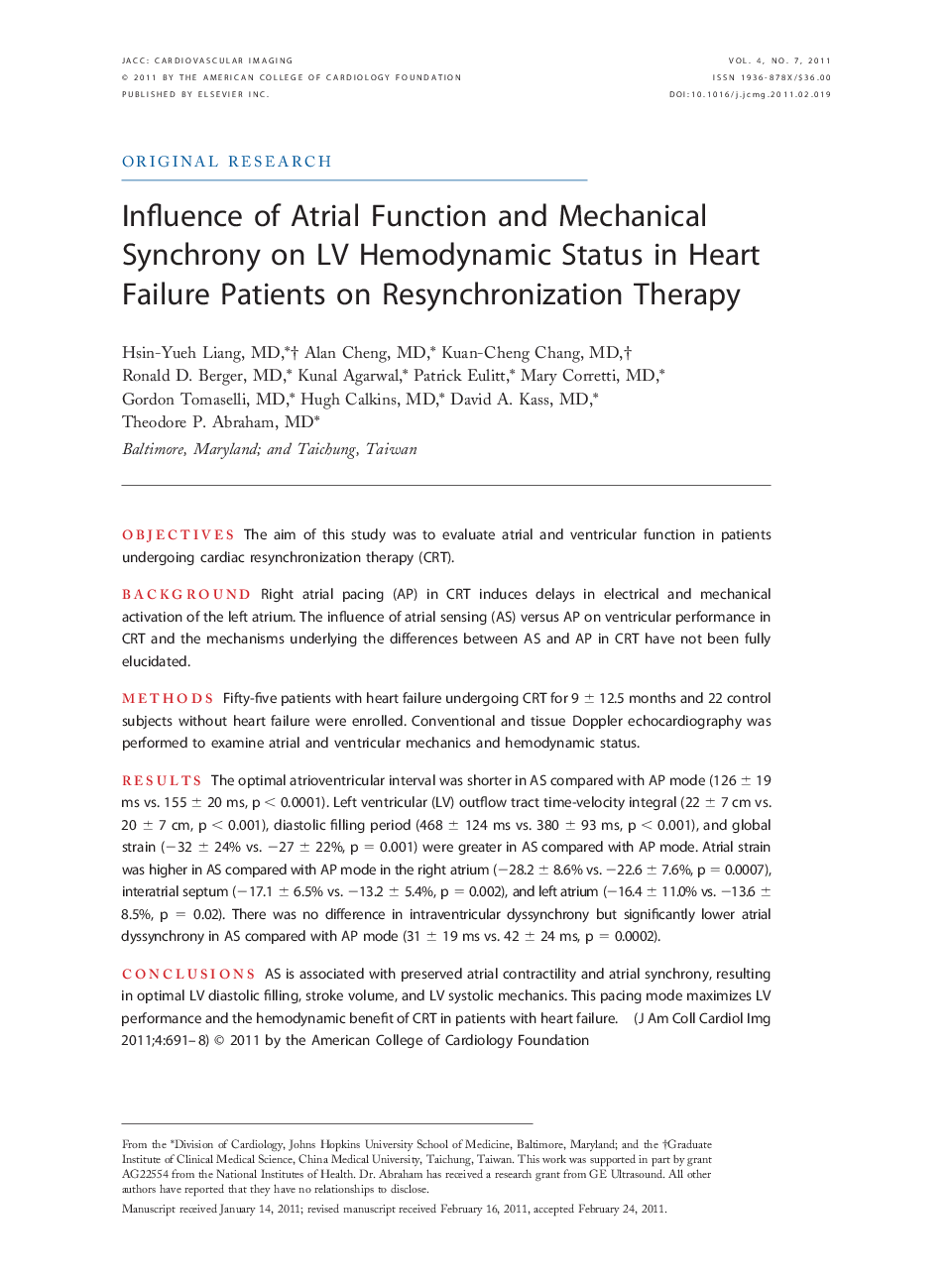| کد مقاله | کد نشریه | سال انتشار | مقاله انگلیسی | نسخه تمام متن |
|---|---|---|---|---|
| 2938852 | 1176960 | 2011 | 8 صفحه PDF | دانلود رایگان |

ObjectivesThe aim of this study was to evaluate atrial and ventricular function in patients undergoing cardiac resynchronization therapy (CRT).BackgroundRight atrial pacing (AP) in CRT induces delays in electrical and mechanical activation of the left atrium. The influence of atrial sensing (AS) versus AP on ventricular performance in CRT and the mechanisms underlying the differences between AS and AP in CRT have not been fully elucidated.MethodsFifty-five patients with heart failure undergoing CRT for 9 ± 12.5 months and 22 control subjects without heart failure were enrolled. Conventional and tissue Doppler echocardiography was performed to examine atrial and ventricular mechanics and hemodynamic status.ResultsThe optimal atrioventricular interval was shorter in AS compared with AP mode (126 ± 19 ms vs. 155 ± 20 ms, p < 0.0001). Left ventricular (LV) outflow tract time-velocity integral (22 ± 7 cm vs. 20 ± 7 cm, p < 0.001), diastolic filling period (468 ± 124 ms vs. 380 ± 93 ms, p < 0.001), and global strain (−32 ± 24% vs. −27 ± 22%, p = 0.001) were greater in AS compared with AP mode. Atrial strain was higher in AS compared with AP mode in the right atrium (−28.2 ± 8.6% vs. −22.6 ± 7.6%, p = 0.0007), interatrial septum (−17.1 ± 6.5% vs. −13.2 ± 5.4%, p = 0.002), and left atrium (−16.4 ± 11.0% vs. −13.6 ± 8.5%, p = 0.02). There was no difference in intraventricular dyssynchrony but significantly lower atrial dyssynchrony in AS compared with AP mode (31 ± 19 ms vs. 42 ± 24 ms, p = 0.0002).ConclusionsAS is associated with preserved atrial contractility and atrial synchrony, resulting in optimal LV diastolic filling, stroke volume, and LV systolic mechanics. This pacing mode maximizes LV performance and the hemodynamic benefit of CRT in patients with heart failure.
Journal: JACC: Cardiovascular Imaging - Volume 4, Issue 7, July 2011, Pages 691–698